ANECDOTES OF WILLIAM HOGARTH
BY HIMSELF
introduced by MARTIN MYRONE
ATHENE PALLAS
The Battle of the Pictures, 1745
This image of Hogarth’s paintings fighting with assorted Old Masters was issued by him as a bidder’s ticket to an auction of his works

p. 7
Anecdotes of William Hogarth, by himself
Edited by John Ireland
Chapter 1, p. 27
Chapter 2, p. 39
Chapter 3, p. 65
Chapter 4, p. 95
Chapter 5, p. 107
Remarks on various prints, by William Hogarth
Edited by John Ireland
p. 129
Remarks on Marriage A-la-Mode, by William Hogarth
Edited by John Ireland, with further explanations by Thomas Clerk
p. 155
List of illustrations
p. 189
CONTENTS Introduction MARTIN MYRONE

‘ SHIFTING FOR MYSELF’: HOGARTH ’ S PROGRESS
‘There is some’, observed Hogarth, in amongst the mass of reflections and notes drawn up late in life, from which his editor John Ireland extracted the autobiography republished here. ‘There is something’, he meant to write, for those notes are rough drafts, ‘so bewitching in these arts that in spite of poverty there will always be too many Poets and Painters’. On the same sheet Hogarth calculated that there could never be ‘More than three History painters or as many statuarys’ that ‘can be supported in this country’, and that ‘if we have three lanskip painters they barely live’. He was writing from experience: ‘in my time I have known three most excellent superior painters, all of [them] extremely industrious’, yet all of whom struggled, and ‘two of them dyed in great poverty’. Penned in the last years of his life, these were the words
Opposite: Self-portrait, c. 1735 (unfinished)
7
INTRODUCTION MARTIN MYRONE
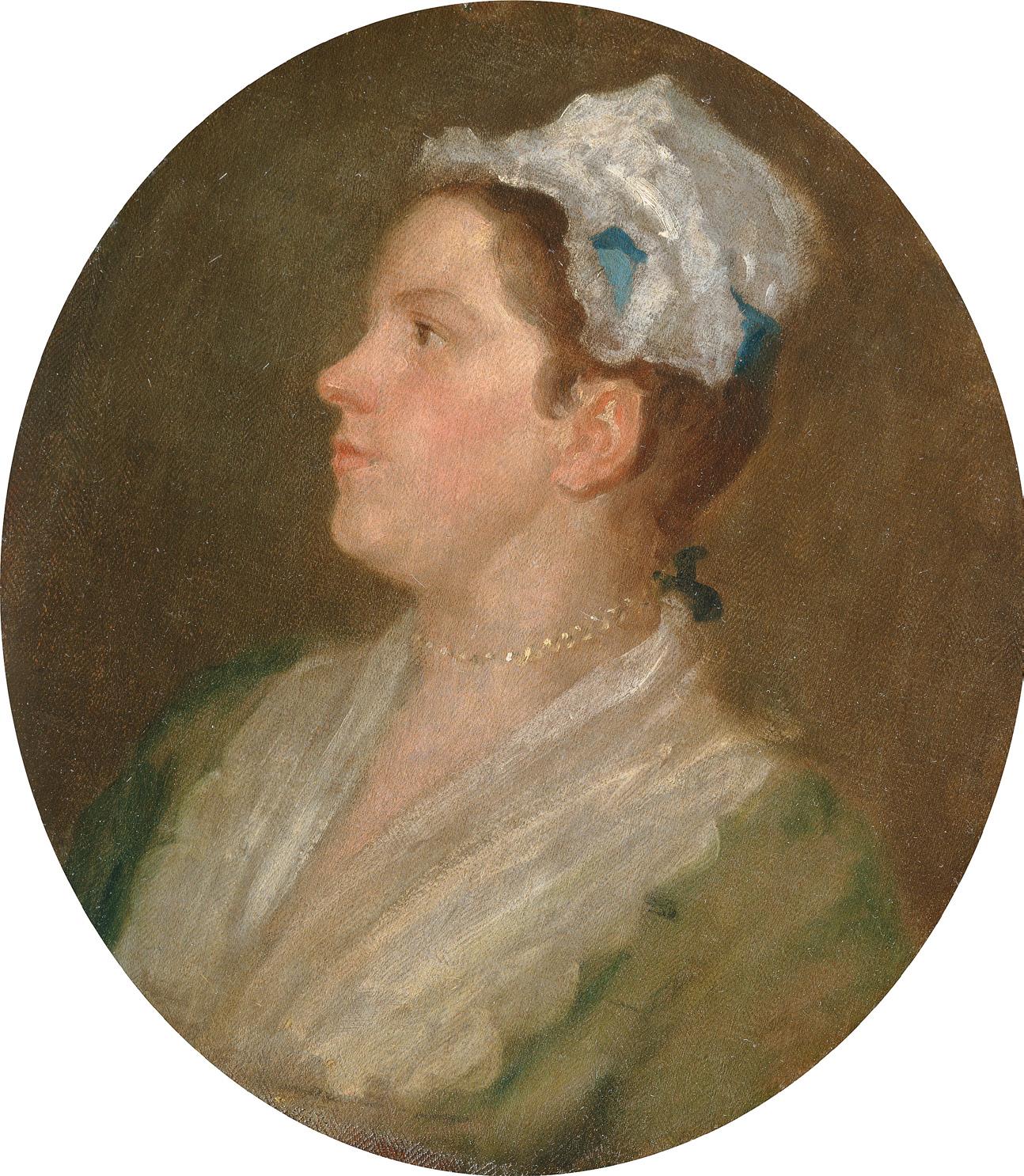
of a painter and engraver who had achieved significant commercial and professional success, succeeding eventually even to the role of Sergeant-painter to the King (a role he had long coveted when it had belonged to his father-in-law James Thornhill and then in succession to his considerably less talented son John Thornhill). But they were the words, too, of someone who had been bruised and beaten by professional struggles, who had seen his printed designs pirated and others profiting by them, who had been publicly abused by fellow artists and sniped at by critics and driven to an embittered isolation in his final years. They reveal someone who had always been acutely aware of the vulnerabilities of the professional artist, at least any artist who had to make his living on the open marketplace with little in the way of personal favour or social status to assist him. The raw economics of the artist’s life are here exposed explicitly, precarity pinpointed as the condition for any creative existence in the context of a selfish and corrupted age. These comments come from a manuscript published in its original form only in the late 1960s, carefully edited by Michael Kitson under the title ‘Apology for Painters’.
The autobiographical elements of the same disorderly
Opposite: Ann Hogarth, c. 1740. The artist’s two younger sisters, Mary and Ann, sold ready-made clothing from the Old Frock Shop in the City of London
INTRODUCTION 9
body of material, extracted by Ireland and held mainly by the British Library (a few sheets found their way elsewhere), had already been published in 1955 by Joseph Burke as an appendix to his scholarly edition of Hogarth’s theoretical work of 1753, The Analysis of Beauty. Together with the drafts of the Analysis, also in the British Library, all these manuscript materials had originally been owned and used by John Ireland. Although by no means a cohesive, or even especially coherent, body of materials, they together constitute an extended reflection by the artist on the nature of artistic work in the jostling, competitive, fraught but also exciting and rapidly expanding eighteenth-century world of art that Hogarth had experienced over the previous five decades. If these themes are at other times expressed in generalised or abstracted form, and if Hogarth repeatedly turns to more generic reflection about the nature of art and the powers of observation, it is with his own life experience that these issues are brought down to earth, made concrete and most comprehensible. It is this reflective context that is crucial to our interpretation of Hogarth’s autobiography, even if it is lost somewhat when Ireland tidied up the autobiographical notes into a generally more conventional life narrative.
Ireland, nonetheless, did a great service to readers by organising Hogarth’s notes as he did. The life story set
10 MARTIN MYRONE
out by Hogarth himself has been widely in use since it first appeared in print at the end of the eighteenth century. Ireland was an admirer of Hogarth, acquiring from Mrs. Mary Lewis of Chelsea, executrix of Hogarth’s widow’s will, a collection of prints, engraved copperplates and the bundled manuscripts. His Hogarth Illustrated (1791; second edition 1793; third 1806) sketched out the artist’s career and provided extensive commentary on his prints. A Supplement to Hogarth Illustrated (1798), a third volume of Hogarth Illustrated, comprised the manuscript materials, including the autobiographical notes, providing a foundation for modern scholarship on the artist. The Supplement appeared in a second edition in 1804, and the autobiography appeared in J. B. Nichols’ Anecdotes of William Hogarth written by himself; With essays on his life and genius, and criticisms on his works, selected from Walpole, Gilpin, J. Ireland, Lamb, Phillips, and others (1833) which provides the materials for a ‘reception history’ of an artist by then being installed as a English Old Master, even a ‘national treasure’ (the famous selfportrait with his pug, Trump, had been purchased by the nascent National Gallery in 1824). There were various republications and quotations over the next century, until the editions based on the manuscripts mentioned above, and the useful modern printing of Nichols’ Anecdotes (1970) with an introduction by Ronald Lightbown.
INTRODUCTION 11
John Ireland, reading his book on Hogarth and with Hogarth’s works on the plinth below; frontispiece to Hogarth Illustrated, in a print by W. Skelton after John Hamilton Mortimer, 1791
Ireland was a professional biographer who knew his craft well. As a friend of Thomas Gainsborough and John Hamilton Mortimer, he also knew artists and the art world. He was, as Kitson notes, ‘a careful editor’ of the manuscripts left by the painter, and he did ‘his best to reproduce Hogarth’s meaning’. Readers have found in Hogarth’s own words affirmations of the pugnaciousness, critical intelligence and common sense that are
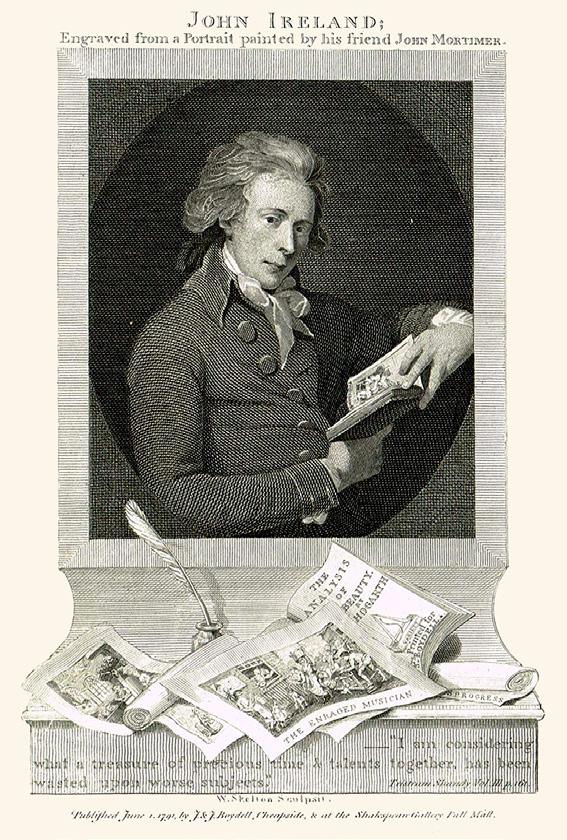
12
MARTIN MYRONE
otherwise to be extrapolated from the sometimes abstruse theoretical reflection of the Analysis or encoded in his printed and painted images. But the raw text of Hogarth’s original was rendered ‘bland’ (Kitson’s term) by Ireland, at the same time as being made more lucid.
Hogarth was born, he noted himself, and Ireland relates, ‘in the City of London’ on 10 November 1697, and he was baptised on 28 November in that same year.
Hogarth had in fact ingeniously omitted the dates from the manuscript, so Ireland supplied them. Ireland followed Hogarth, though, in providing the key statement about his family background, put originally in the third person: ‘His Fathers Pen like that of many other authors was incapable of more than putting him in a way to shift for himself’. Hogarth’s father, Richard Hogarth, was an author and schoolmaster, who had indeed struggled to make ends meet from his writing and had, moreover, been undone and imprisoned for debt in 1712 after the failure of a coffee-house whose habitués were obliged to speak Latin. If that later project seems to us a selfevidently ill-advised commercial venture, Hogarth drew attention instead to the ‘cruel treatment he met with from Bookseller and Printers particularly in the affairs of a lattin Dictionary’ which never appeared before his untimely death in 1718. Hogarth was indeed left ‘shifting for myself’, without the option of a university education
INTRODUCTION 13
or professional career that a more successful schoolmaster’s son might have anticipated. He was apprenticed instead to a silver engraver. In the muddled manuscript notes he returns several times to the point, aged twenty or twenty-three or twenty-four (all these ages are stated), that he turned instead to more inventive art, to an innovative form of portrait painting with ‘figures from 10 to 15 inches high’, to ‘the grand stile of history painting’ and the ‘Modern moral subject’. He accounts for his time to that date as ‘lost … in business that was rather detrimentall to the arts of Painting and Engraving’.

14 MARTIN
MYRONE
Detail from a piece of silver thought to have been engraved by Hogarth: The Walpole Salver, 1728-29, by Paul de Lamerie
Although Hogarth does not present it in these terms, he was arguably fortunate to have developed such aspirations at a moment of commercial opportunity in Britain. Without the formal hierarchies of the continental academic system, but without, too, much in the way of patronage from monarchy, state or church, artists in the burgeoning metropolis of London were finding novel ways to make money from art. Political stability, the (relative) lack of war, liberty of the press and the proliferation of satire and criticism, together with the rapid expansion of middle-class audiences and the market for images, all conspired to create a situation that Hogarth and others were able to exploit in several ways: with new forms of portrait painting that articulated the more modest, good-humoured values of the emerging social world; with narrative and theatrical pictures that provided entertainment and a certain degree of moral education; and, crucially, with the engraved prints reproducing such pictures which could profitably disseminate an artist’s ideas and identity at a speed and across a social spectrum that was unprecedented.
In the summary words of Ronald Paulson, the scholar whose biography and catalogue of prints are foundation stones for present-day Hogarth scholarship, ‘The burden of the autobiography is that he was self-taught, a tradesman, a patriotic Englishman: he was a champion
INTRODUCTION 15
The Graham Children, 1742. This group portrait shows the family of Daniel Graham, apothecary to George I and George II
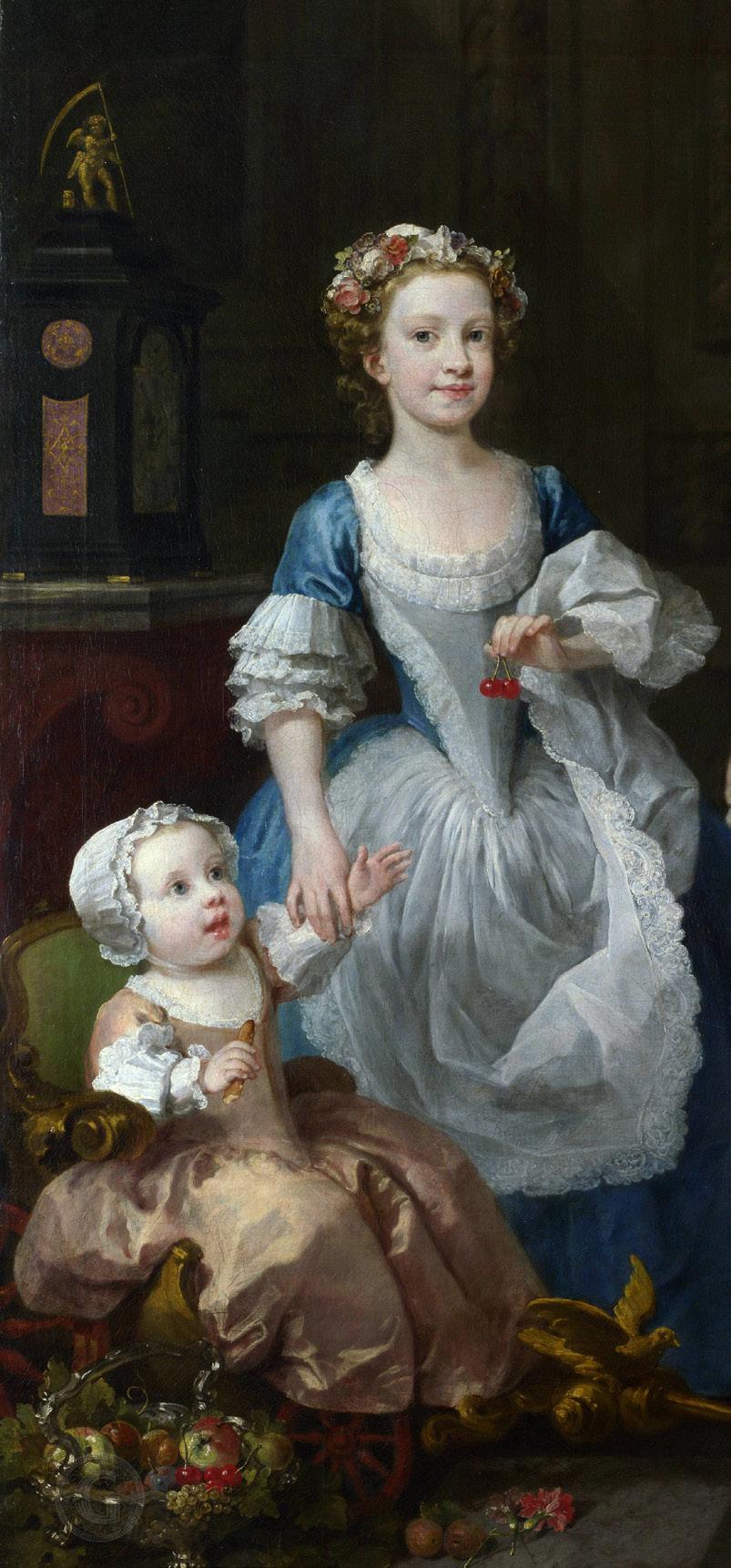
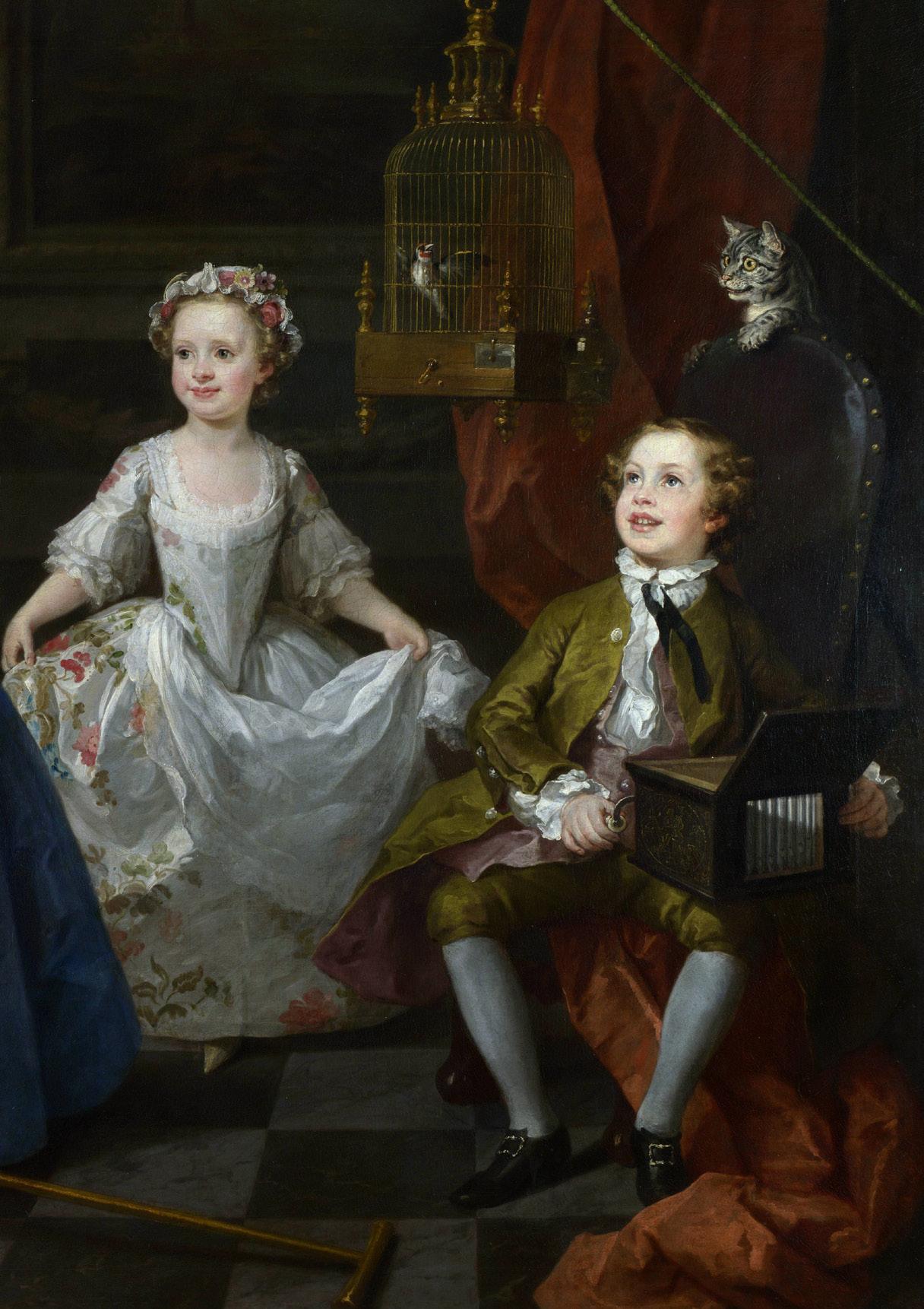
of liberty and the individual against printsellers, pirates, connoisseurs, and political extremists’. Hogarth opposes what we might label ‘book learning’ and insists instead upon native talents and the innate powers of observation whose possession might be an accident of birth but whose consummation depended upon ‘Encouragement and opportunity’. These themes are apparent in Ireland’s rendering of the autobiography, but are even more vivid in the theoretical digressions and reflections upon the art world that punctuate the original manuscript so untidily. Generally smoothed out to facilitate the presentation of a more linear life story, Hogarth’s text is made by Ireland to conform – to a point – to the emerging norms of the writing of artists’ lives. These were arguably less sensitive to the social and economic contingencies that run through Hogarth’s commentary on his emergence as an artist. He rejects the idea that ‘a man must be born a Painter’, as if genius were a mere accident. The artist is, in his account, socially produced, with whatever innate talent he may be equipped with sharpened, blunted or misdirected according to circumstances.
Thus it is that Hogarth’s narrative, even in Ireland’s rendering, may seem to the modern reader rather lopsided and errant in some regards. It is a ‘progress’, full of ups and more downs, leading ultimately to disappointment rather than fulfilment. But as the literary scholar Karen
18 MARTIN MYRONE
Junod notes, the texts ‘focused on Hogarth’s professional achievements as a painter and engraver, but failed to provide what most eighteenth-century biographers were keen to offer: personal anecdotes about the painter’s life’. He spends longer than we might expect ruminating upon his background and youth and is surprisingly frank about the wasted years of his youth before he ventured out as a painter and designer. He is unexpectedly direct about his technical limitations as an engraver and his shortcomings as a painter of portraits. He gives a great deal of space and energy to his frustrations with printsellers, picture-dealers and publishers, and especially with the proposals for a formal art academy from among fellow-artists which seemed to him to risk putting British art on an entirely wrong footing, driven by pretensions to excel and theoretical notions rather than an engagement with life as it is lived and the production of paintings that spoke to the experience of the present. He takes time to take a swipe at the now almost forgotten French portrait painter Jean-Baptiste Vanloo, and dwells upon the illfated production of a history painting, Sigismunda (1759, Tate) which brought him public embarrassment at the end of his life. His history paintings for St Bartholomew’s Hospital are given prominence, and the argument with the urbane Scottish portrait painter Allan Ramsay set out in full, with Hogarth’s pride in his triumphant portrait
INTRODUCTION 19
The Laughing Audience, 1733, used as a subscription ticket for the series of engravings, A Rake’s Progress, and for the print of Southwark Fair
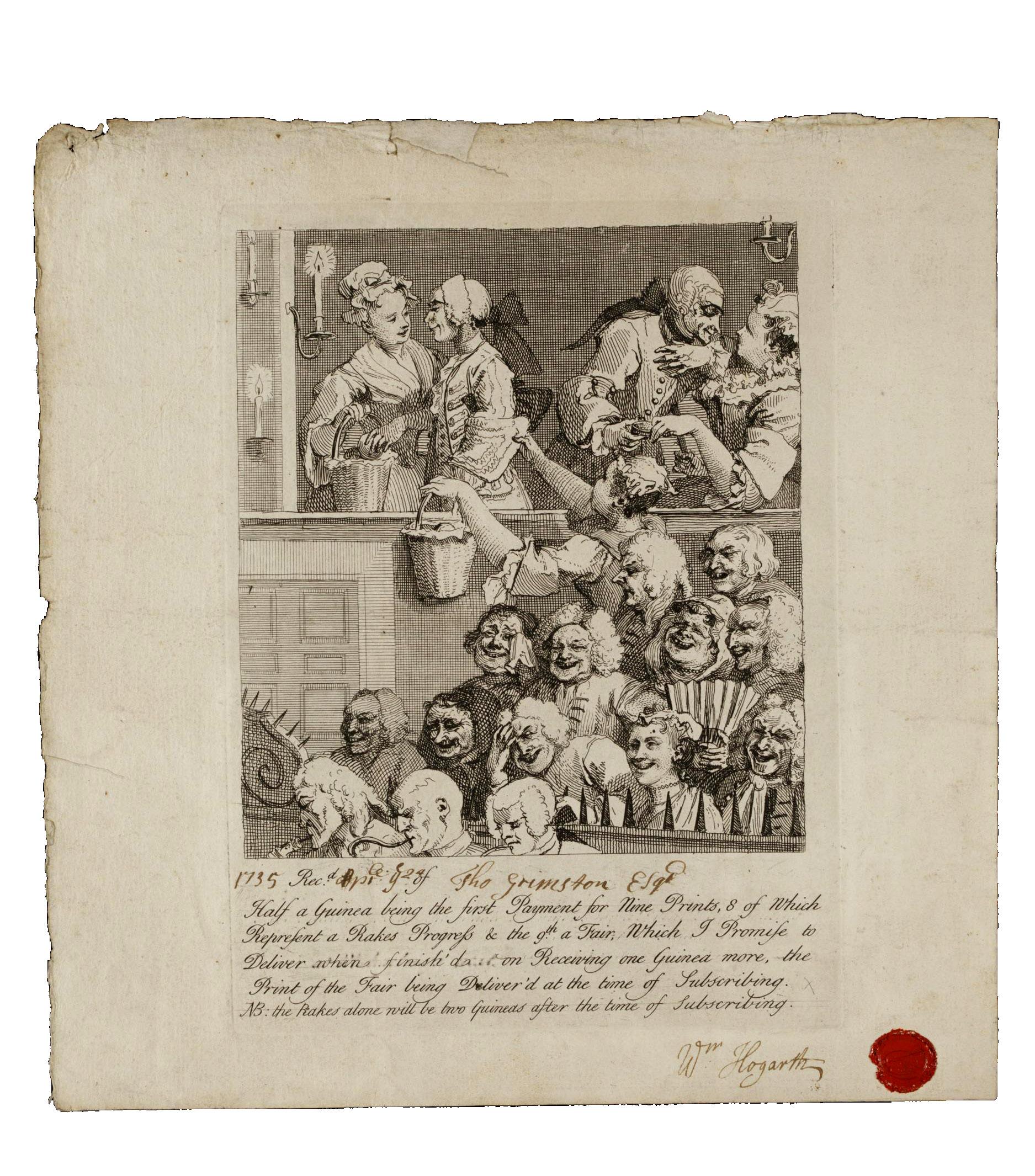
of Captain Coram a centrepiece of the narrative. Yet the modern moral series – A Harlot’s Progress, A Rake’s Progress and Marriage A-la-Mode, which are now emphatically considered his central achievement as an artist and his major contribution to Western art history – are curiously de-emphasised in the autobiography (the commentaries on individual prints provides some degree of compensation, but not a great deal). Hogarth the social critic, the observer of London life, the scathing chronicler of prostitutes and low-life types and the corrupt in high-life, is scarcely to be distinguished in the account of the painter as a necessarily improvising observer of nature, driven to innovate by financial necessity and personal shortcomings, continually aspiring to paint history and be recognised as an authentic talent. In these respects, Hogarth may appear to be an untrustworthy witness to his own capabilities. But his insistence on struggle and failure, and his emphasis on the material influence of professional disputes and commercial realities, remain refreshingly direct and cut through much of the deception and disingenuity that emerged as stock features of artistic biography in the Romantic era. There are, without doubt, pessimism and disappointment in play when Hogarth wrote these words, which may be distracting. But he also demonstrates an unusually sharp understanding of the emerging realities of the modern
INTRODUCTION 21
A Rake’s Progress, Plate 1,
Tom Rakewell comes into his inheritance
 1735.
1735.
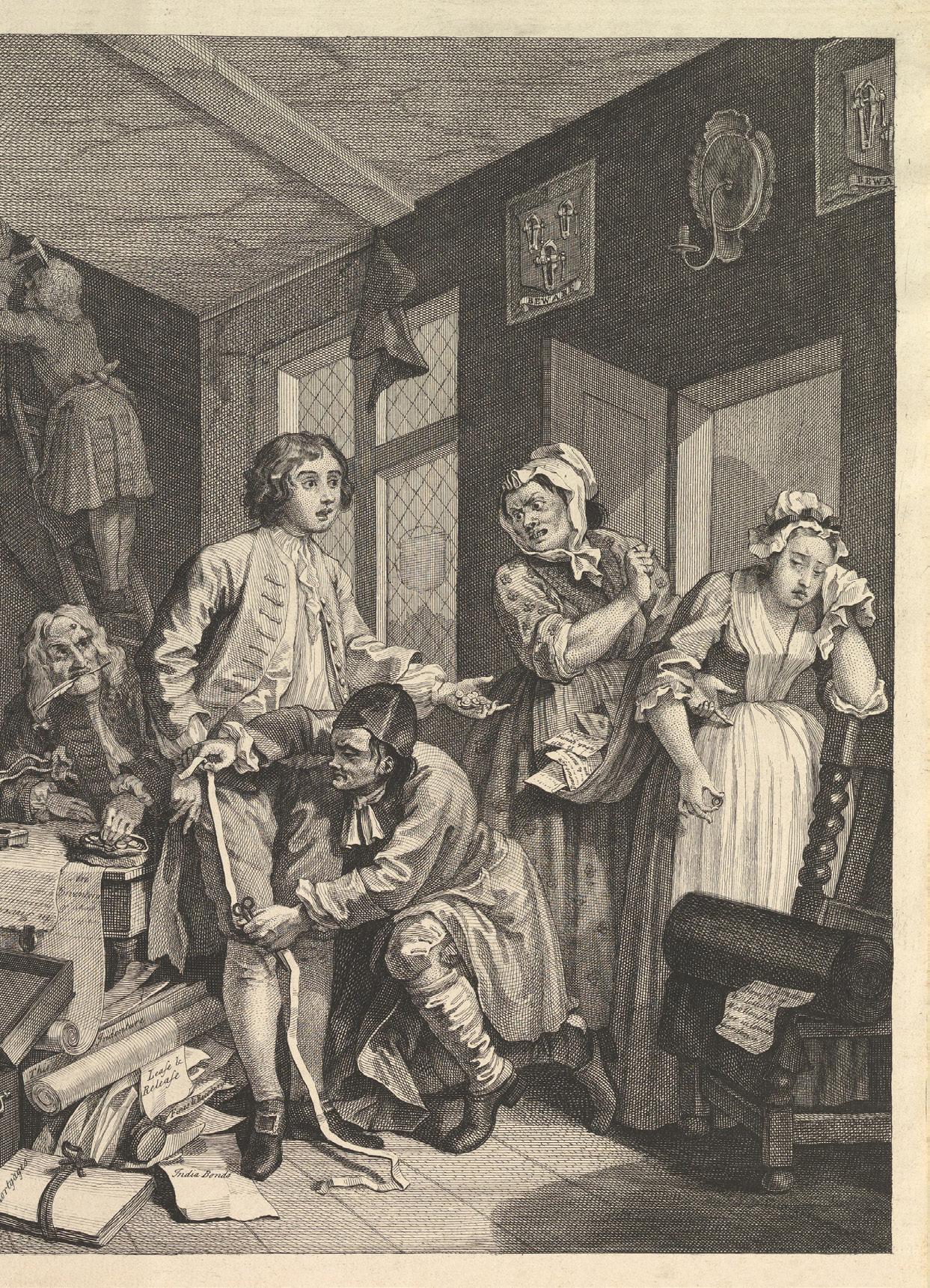
art world, both as a place of brutal commercial competition and professional rivalry, and an environment where the ‘bewitching’ nature of art was renewed sufficiently to inspire the kind of resilience, innovation and passion that are so apparent in Hogarth’s life and art – and in his autobiographical musings.
SOME FURTHER READING
David Bindman, William Hogarth, London, 1981
Joseph Burke, ed., William Hogarth: The Analysis of Beauty; With the Rejected Passages from the Manuscript Drafts and Autobiographical Notes, Oxford, 1955
Mark Hallett and Christine Riding, eds., Hogarth, exhibition catalogue, Tate Britain, London, 2006
Karen Junod, ‘Writing the lives of painters’: Biography and artistic identity in Britain, 1760-1810, Oxford, 2011
Michael Kitson, ‘Hogarth’s “Apology for Painters”’, The Walpole Society, vol. 41 (1966), pp. 46–111
Ronald Paulson, Hogarth, 3 vols, New Brunswick and New Jersey, 1991-93
Ronald Paulson, ed., William Hogarth: The Analysis of Beauty, New Haven and London, 1997
Marcia Pointon, William Hogarth’s Sigismunda in focus, London, 2000
24
MARTIN MYRONE












 1735.
1735.
